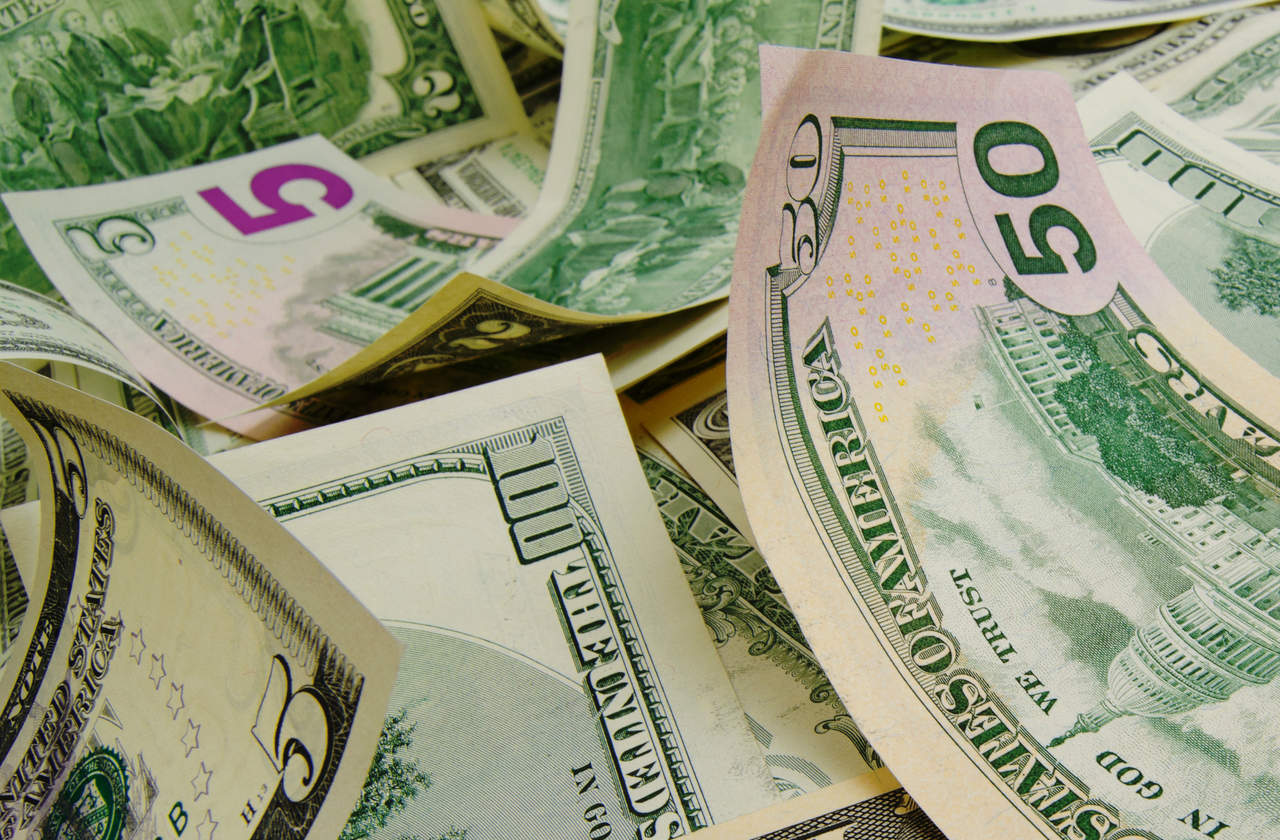10 Stocks Every Retiree Should Own
When it comes to building a retirement portfolio, your first steps should be to make sure it’s diversified and isn’t too risky.


When it comes to building a retirement portfolio, your first steps should be to make sure it’s diversified and isn’t too risky. Beyond that, it’s about finding a mix of stocks and bonds that can provide enough income to last for years.
For the core of your stock portfolio, stick with stable companies that pay healthy dividends. These aren’t necessarily the highest-growth stocks that will produce spectacular returns. But they can make up for their lack of sizzle with a bedrock business that produces steady income and modest share price gains over time.
Our lineup of stocks that fit the bill includes drugmakers, telecommunication service providers and consumer-goods companies. We also recommend a couple of U.S. automakers that look poised for gains, and the profit king of the smartphone market, Apple (AAPL), which should be a reliable earner and dividend payer for years.
We can’t assure you that these stocks won’t slump if the market heads south. But stick with them for the long haul and you should reap attractive returns from both dividends and share price appreciation.
All prices and other data are as of December 29, 2016. Price/earnings ratios are based on the average of analysts’ forecasts for calendar 2017, as compiled by Zacks Investment Research. Stocks are listed alphabetically.

Apple
- Symbol: AAPL
- Share price: $116.73
- Dividend yield: 1.9%
- Price/earnings ratio: 13
It’s somewhat unusual to look to the technology sector for dividends and value, but Apple is no ordinary company. The company hauled in $215.6 billion in sales and $45.7 billion in profits in the 12-month period that ended in September 2016—more revenues and earnings in a year than just about any other company in the world. Apple’s hoard of cash and securities has swollen to $67.3 billion. The company has another $170 billion in long-term investments. It is now so cash-rich and profitable that it can afford to buy back massive quantities of its own shares and hike its dividend, which it has raised at an annualized pace of 10% over the past four years.
Apple might never achieve the growth rates it enjoyed when the iPhone was first ascendant. Profits, in fact, dipped 14.4% in fiscal 2016, compared with a year earlier. But analysts see earnings rising 9% in fiscal 2017 and 10% the following year, fueled by sales of a new iPhone that Apple will likely launch in late 2017 to coincide with its 10th anniversary on the market. Investors aren’t paying much for that growth, with the stock trading at about 13 times earnings, well below the P/E ratio of 17 for Standard & Poor’s 500-stock index. More dividend hikes are likely as Apple continues to rake in cash.

AT&T
- Symbol: T
- Share price: $42.66
- Dividend yield: 4.6%
- Price/earnings ratio: 15
The telecommunications services sector is well known for dividends, and AT&T offers one of the highest. The company has paid uninterrupted dividends since 1984 and has raised its payout annually for more than three decades. At the same time, AT&T’s payout routinely makes it one of the highest-yielding common stocks on the market—well above the 2.1% yield of the S&P 500.
Although phone service remains AT&T’s core business, the company is moving aggressively into pay-TV and content production with acquisitions such as DirecTV and a pending deal to buy Time Warner—an entertainment giant whose lineup includes CNN, HBO and the Warner Brothers movie studio. Analysts aren’t counting on the deal going through, due to antitrust issues. But even without it, AT&T’s profits should still rise by about 5% in 2017, providing plenty of cash for its next dividend hike.

Colgate-Palmolive
- Symbol: CL
- Share price: $65.89
- Dividend yield: 2.3%
- Price/earnings ratio: 23
Colgate-Palmolive is as old-school as they come. Demand for its brands of toothpaste, dish soap and other household goods might ebb and flow. But people are likely to keep buying these products even if the economy slows. That steadiness has allowed Colgate to pay dividends every year since 1895, and the company has increased its payout annually for more than 50 years.
Colgate’s income stream has made a big difference in its stock returns. Including dividends, the shares have returned a total of 110% over the five-year period that ended September 30, 2016. By comparison, the S&P 500 returned less than 95% in that stretch. Colgate derives 80% of its sales abroad, including 51% from fast-growing developing markets. A rising dollar would hurt its overseas business (by making sales and profits earned in foreign currencies worth less when converted to greenbacks). Even with those pressures, analysts forecast a 9% increase in Colgate’s profits in 2017.

Ford Motor
- Symbol: F
- Share price: $12.23
- Dividend yield: 4.9%
- Price/earnings ratio: 7
U.S. auto sales hit a record high in 2015. But the prospect of leaner times ahead has weighed on shares of Ford. The stock has slumped 6% this year, including dividends. Yet the market is treating Ford, with a P/E ratio of just 7, as if profits will fall off a cliff.
That doesn’t appear to be happening. Analysts estimate that earnings per share will inch up about 2% in 2017. That’s hardly great growth, but it should be enough to support Ford’s quarterly dividend of 15 cents per share. Investors can expect more dividend increases as long as auto sales remain solid.

General Motors
- Symbol: GM
- Share price: $35.14
- Dividend yield: 4.3%
- Price/earnings ratio: 6
As with Ford, the case for investing in General Motors comes down to dividends and valuation. Only about three-dozen common stocks in the S&P 500 possess yields above 4%, GM being one of them. It’s also one of the few high-yield stocks that should easily cover its payout from profits generated by running the business. GM distributed just 24.1% of its profits as dividends in 2016, giving the firm ample room to cover its payout and hike it in the future. Analysts see earnings per share dipping to $5.83 in 2017, from $6 in 2016. But with a P/E ratio of 6, GM’s stock isn’t pricing in much, if any, growth. Even a slight boost in auto sales could make the stock a big winner.

International Paper
- Symbol: IP
- Share price: $53.37
- Dividend yield: 3.3%
- Price/earnings ratio: 16
As one of the world’s largest suppliers of paper and packaging materials, International Paper may not sound like an exciting business. But it possesses some attractive features. The company dominates the market for containerboard, giving it exposure to rising demand for packaging used by online retailers. For example, the company supplies half of Amazon.com’s shipping boxes. Analysts expect earnings to climb an average 9% a year over the next five years. The firm pays a healthy dividend, too, and it is income you should be able to count on. The company has paid uninterrupted dividends since 1993.

Merck
- Symbol: MRK
- Share price: $59.04
- Dividend yield: 3%
- Price/earnings ratio: 16
A health care stalwart and component of the Dow Jones Industrial Average, drugmaker Merck hasn’t missed a quarterly dividend payment in more than three decades. A recent four-year streak of dividend increases looks likely to continue. And Merck’s growth prospects look compelling. Years of acquisitions, plus research and development, are resulting in a slew of successful drugs now on the market. Cancer medicine Keytruda is an ongoing hit, for example, and Merck has more potential winners in the works with 24 drugs in the latter stages of development. Earnings per share are on track to rise 5% in 2016. In the 12-month period that ended September 30, 2016, Merck generated $9 billion in free cash flow (cash profits available to shareholders, minus capital spending to run the business).

Pfizer
- Symbol: PFE
- Share price: $32.49
- Dividend yield: 3.6%
- Price/earnings ratio: 13
Like Merck, Pfizer is a Dow component and a relatively high-yield stock. Investors worry that the company isn’t producing enough new products to overcome the loss of revenues from drugs that lose patent protection. But Pfizer has invested heavily in research and development, and made some big acquisitions that should start to produce a new wave of products. Breast cancer treatment Ibrance, blood thinner Eliquis and the pneumococcal pneumonia vaccine Prevnar 13 are just three of the company’s recent successes. And Pfizer’s lineup of drugs in development looks promising, with 94 products in the works.
The company has paid quarterly dividends consistently for decades and has a six-year history of dividend growth. Earnings per share are expected to rise 9% next year, and the dividend looks well-covered. Analysts forecast that the company will shell out more than $7 billion in dividends in 2017, less than half the firm’s estimated net income of $15.9 billion.

Verizon
- Symbol: VZ
- Share price: $53.74
- Dividend yield: 4.2%
- Price/earnings ratio: 14
Dow component Verizon, formerly called Bell Atlantic, has paid dividends under its current name since 2000. It can also claim nine straight years of dividend growth. But the company has more to offer than an income stream.
Verizon is repositioning itself for a world in which mobile content and ads are ubiquitous. It purchased AOL for its digital-advertising technology in 2015 and currently has an agreement to buy Yahoo (YHOO). That deal may not go through, partly because of Yahoo’s recent disclosure of a massive data theft impacting more than 1 billion accounts. But Verizon is raking in cash from its mobile business, Fios TV service and other revenue sources. Profits should climb 4% in 2017, according to the average of analysts’ estimates. Throw in a 4.3% dividend yield and you could scoop up total returns of more than 8% over the next year if the stock keeps pace with profit growth.

Waste Management
- Symbol: WM
- Share price: $71.01
- Dividend yield: 2.3%
- Price/earnings ratio: 24
Waste Management has the advantage of a wide moat: Cracking into its business of collecting garbage and hazardous material isn’t easy. Investing in trucks and dump sites is costly and fraught with red tape, helping the company defend its turf from rivals. The firm controls 30% of the waste collection market, 47% of the landfill market and 63% of the waste transportation market. It also has avenues of growth, thanks to increasing concerns about the environment leading to more demand for recycling and waste disposal services. The company is doubling down on using garbage as a renewable energy source, too. Waste Management currently makes enough energy from refuse to power the equivalent of 1 million homes each year. That should rise to 2 million homes by 2020.
Waste Management’s revenues aren’t particularly sensitive to economic cycles for one simple reason: There will always be garbage. That steadiness has helped the company lift its dividend annually for 12 consecutive years. The firm also generates buckets of cash (after operating expenses and capital spending), which should keep the payouts coming.
Profit and prosper with the best of Kiplinger's advice on investing, taxes, retirement, personal finance and much more. Delivered daily. Enter your email in the box and click Sign Me Up.

Dan Burrows is Kiplinger's senior investing writer, having joined the publication full time in 2016.
A long-time financial journalist, Dan is a veteran of MarketWatch, CBS MoneyWatch, SmartMoney, InvestorPlace, DailyFinance and other tier 1 national publications. He has written for The Wall Street Journal, Bloomberg and Consumer Reports and his stories have appeared in the New York Daily News, the San Jose Mercury News and Investor's Business Daily, among many other outlets. As a senior writer at AOL's DailyFinance, Dan reported market news from the floor of the New York Stock Exchange.
Once upon a time – before his days as a financial reporter and assistant financial editor at legendary fashion trade paper Women's Wear Daily – Dan worked for Spy magazine, scribbled away at Time Inc. and contributed to Maxim magazine back when lad mags were a thing. He's also written for Esquire magazine's Dubious Achievements Awards.
In his current role at Kiplinger, Dan writes about markets and macroeconomics.
Dan holds a bachelor's degree from Oberlin College and a master's degree from Columbia University.
Disclosure: Dan does not trade individual stocks or securities. He is eternally long the U.S equity market, primarily through tax-advantaged accounts.
-
 What to Do When You Bank Lowers Your APY
What to Do When You Bank Lowers Your APYWhy banks lower APYs, options you can explore when it happens and whether more rate cuts are on the horizon.
-
 Forget Financial Forecasts: Focus on These 3 Goals for Success
Forget Financial Forecasts: Focus on These 3 Goals for SuccessWe know the economy is unpredictable and markets will do what they do, no matter who predicts what. Here's how to focus on what you can control.
-
 Why In-Person Financial Guidance Remains the Gold Standard
Why In-Person Financial Guidance Remains the Gold StandardFace-to-face conversations between advisers and clients provide the human touch that encourages accountability and a real connection.
-
 Dow Hits New High Then Falls 466 Points: Stock Market Today
Dow Hits New High Then Falls 466 Points: Stock Market TodayThe Nasdaq Composite, with a little help from tech's friends, rises to within 300 points of its own new all-time high.
-
 Dow, S&P 500 Rise to New Closing Highs: Stock Market Today
Dow, S&P 500 Rise to New Closing Highs: Stock Market TodayWill President Donald Trump match his Monroe Doctrine gambit with a new Marshall Plan for Venezuela?
-
 States That Tax Social Security Benefits in 2026
States That Tax Social Security Benefits in 2026Retirement Tax Not all retirees who live in states that tax Social Security benefits have to pay state income taxes. Will your benefits be taxed?
-
 'Donroe Doctrine' Pumps Dow 594 Points: Stock Market Today
'Donroe Doctrine' Pumps Dow 594 Points: Stock Market TodayThe S&P 500 rallied but failed to turn the "Santa Claus Rally" indicator positive for 2026.
-
 Stocks Struggle for Gains to Start 2026: Stock Market Today
Stocks Struggle for Gains to Start 2026: Stock Market TodayIt's not quite the end of the world as we know it, but Warren Buffett is no longer the CEO of Berkshire Hathaway.
-
 Stocks End Volatile Year on a Down Note: Stock Market Today
Stocks End Volatile Year on a Down Note: Stock Market TodayAfter nearing bear-market territory in the spring, the main market indexes closed out the year with impressive gains.
-
 Stocks Extend Losing Streak After Fed Minutes: Stock Market Today
Stocks Extend Losing Streak After Fed Minutes: Stock Market TodayThe Santa Claus Rally is officially at risk after the S&P 500's third straight loss.
-
 Santa Claus Rally at Risk as Tech Stocks Slump: Stock Market Today
Santa Claus Rally at Risk as Tech Stocks Slump: Stock Market TodayThe Nasdaq Composite and Dow Jones Industrial Average led today's declines as investors took profits on high-flying tech stocks.
